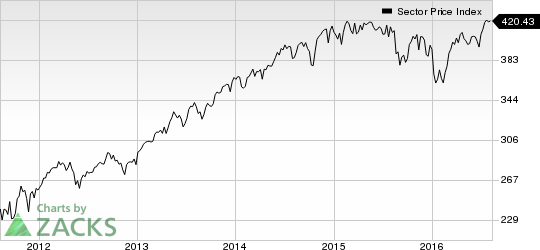The U.S. Energy Department's weekly inventory release showed that crude stockpiles recorded a surprise build. Worryingly, supplies at the Cushing, OK storage hub jumped, too. On a bullish note, the report revealed that refined product inventories – gasoline and distillate – both decreased from their previous week levels.
While the unseasonal crude build report offset the big drop in fuel supplies, data showing record July production from Saudi Arabia weighed on markets. As a result, West Texas Intermediate (WTI) crude futures lost 2.5% (or $1.06) to settle at $41.71 per barrel Wednesday.
Analysis of the EIA Data
Crude Oil: The federal government’s EIA report revealed that crude inventories increased by 1.06 million barrels for the week ending Aug 5, 2016, following a rise of 1.41 million barrels in the previous week.
The analysts surveyed by S&P Global Platts – the leading independent commodities and energy data provider – had expected crude stocks to go down some 1.75 million barrels. Lower refinery usage led to the surprise stockpile build with the world's biggest oil consumer even as imports and production fell.
In particular, crude inventories at the Cushing terminal in Oklahoma – the key delivery hub for U.S. crude futures traded on the New York Mercantile Exchange – was up 1.16 million barrels from previous week’s level to 65.26 million barrels.
Following the third straight week of inventory rise, at 523.60 million barrels, current crude supplies are up 15% from the year-ago period and are at the highest level during this time of the year.
The crude supply cover – at 31.3 days – remained unchanged from the previous week. In the year-ago period, the supply cover was 26.8 days.
Gasoline: Supplies of gasoline were down for the second time in two weeks as demand strengthened. The 2.81 million barrels draw – comfortably exceeding the analysts’ polled number of 1.6 million barrels decrease in supply level – took gasoline stockpiles down to 235.38 million barrels. Despite last week’s decline, the existing stock of the most widely used petroleum product is 9% higher than the year-earlier level and is comfortably above the upper half of the average range.
Distillate: Distillate fuel supplies (including diesel and heating oil) fell by 1.96 million barrels last week, as opposed to analysts’ expectations for an 400,000 barrels rise in inventory level. The decrease in distillate fuel stocks – for the third time in four weeks – could be attributed to lower production and strengthening demand. But at 151.20 million barrels, distillate supplies are still 2% higher than the year-ago level and are near the upper half of the average range for this time of the year.
Refinery Rates: Refinery utilization was down by 1.1% from the prior week to 92.2%.
About the Weekly Petroleum Status Report
The Energy Information Administration (EIA) Petroleum Status Report, containing data of the previous week ending Friday, outlines information regarding the weekly change in petroleum inventories held and produced by the U.S., both locally and abroad.
The report provides an overview of the level of reserves and their movements, thereby helping investors understand the demand/supply dynamics of petroleum products. It is an indicator of current oil prices and volatility that affect the businesses of the companies engaged in the oil and refining industry.
The data from EIA generally acts as a catalyst for crude prices and affect producers, such as Exxon Mobil Corp. (NYSE:XOM) , Chevron Corp. (NYSE:CVX) and ConocoPhillips (NYSE:COP) , and refiners such as Valero Energy Corp. (NYSE:VLO) , Phillips 66 (NYSE:PSX) and HollyFrontier Corp. (NYSE:HFC) .
VALERO ENERGY (VLO): Free Stock Analysis Report
CHEVRON CORP (CVX): Free Stock Analysis Report
EXXON MOBIL CRP (XOM): Free Stock Analysis Report
CONOCOPHILLIPS (COP): Free Stock Analysis Report
HOLLYFRONTIER (HFC): Free Stock Analysis Report
PHILLIPS 66 (PSX): Free Stock Analysis Report
Original post
Zacks Investment Research

